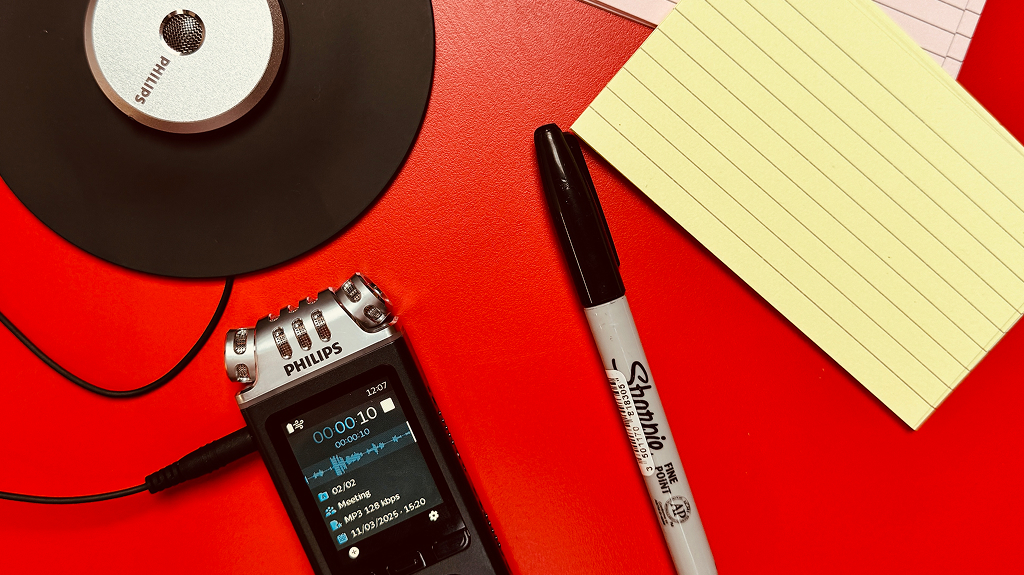How we use AI transcription to improve our UX workshops
UX workshops move fast. People are thinking out loud, sketching ideas, debating priorities. My job as a facilitator is to keep that energy moving and make sure we get something valuable from it. But that’s hard to do if I’m constantly switching between leading the session and trying to take notes.
Dan and I are always looking for small ways to improve our process. One change I’ve made recently is recording workshops and using AI transcription to help with documenting the output afterwards. It’s a small tweak, but it’s had a large impact on how well we capture and use what’s said in the room.
Being fully present
I use a simple, standalone recording device with a 360° mic. No apps, no distractions. I ask everyone for their consent beforehand and when I hit record, I let the group know. There’s usually a brief moment of self-awareness, then people settle and get stuck in. I’ve found it actually helps signal the shift from general chat into workshop mode.
Knowing the conversation is being captured means I don’t need to write notes or rely on memory. I can focus completely on listening and guiding the group. It’s helped me lead sessions in a more structured, relaxed way and focussed my efforts on helping participants speak openly about their thoughts and considerations for each step of the workshop.
Capturing insight, not just artefacts
After the session, I run the audio through Amazon Transcribe to produce a JSON-formatted transcript with speaker labels, speech segments and timestamps.
From there I can:
- Use AI to identify specific discussion topics like pain points, need statements or key themes
- Compare what was said to what was written down on post-its or cards during the workshop
- Spot any gaps before producing final artefacts
- Summarise and structure deliverables with nothing lost
It means the outputs reflect the full conversation, not just what was captured on the wall. I can dig into the discussion and double-check that we haven’t missed any nuance or insight that may otherwise be lost.

Listening before acting
One of our principles at hrpr is about open communication. We listen, we don’t interrupt, and we don’t make assumptions before fully understanding what’s being said. Recording and transcribing is part of that discipline. It means we can reflect properly before we act - especially on complex challenges with multiple points of view.
It’s not about creating a library of transcripts or tracking what people say over time. These recordings are short-term tools. Once the insights are documented and acted on, they’re done. The primary goal after the workshop is always to help clients find a way to fix the problems we uncover - so, if we’re doing that well, the issues discussed should become redundant within a few weeks or months (or even sometimes days).
What this means for clients
The result is a more fluid, focused workshop and stronger, more complete documentation afterwards. It’s a simple shift in process that helps me do my work better. Clients get more value from the session - less gets lost, more gets acted on.

